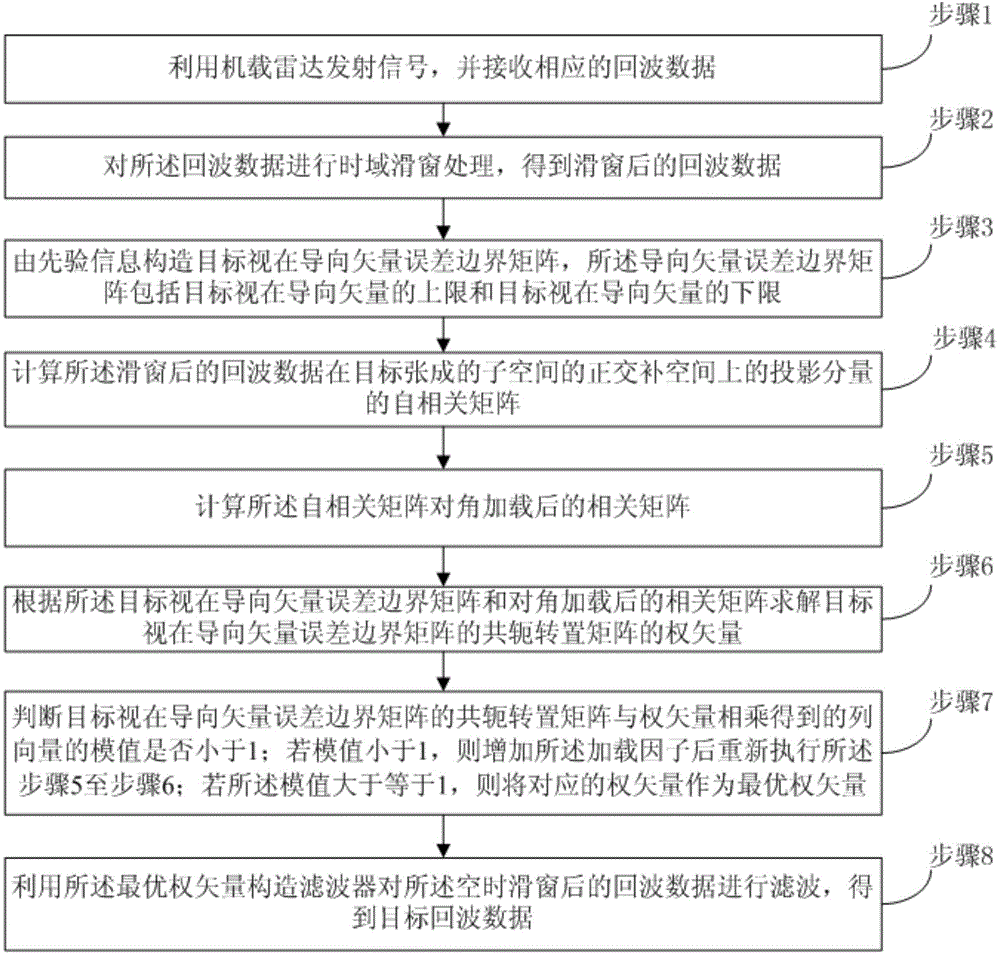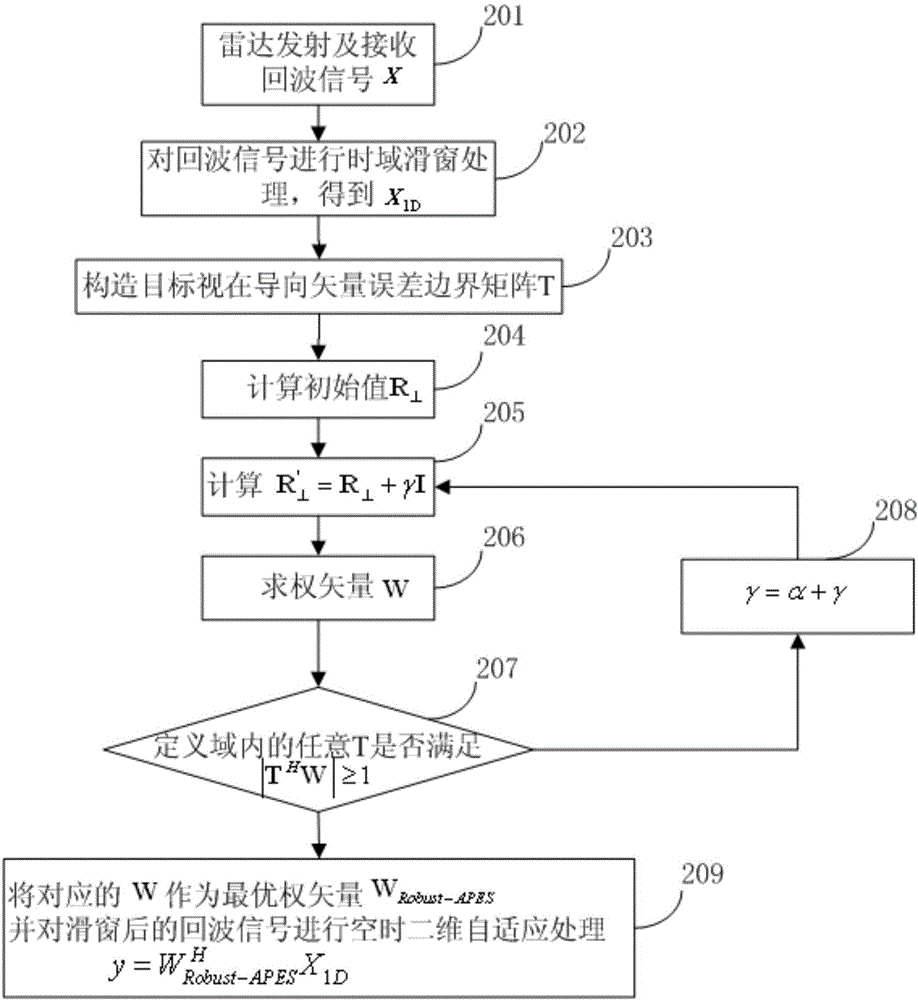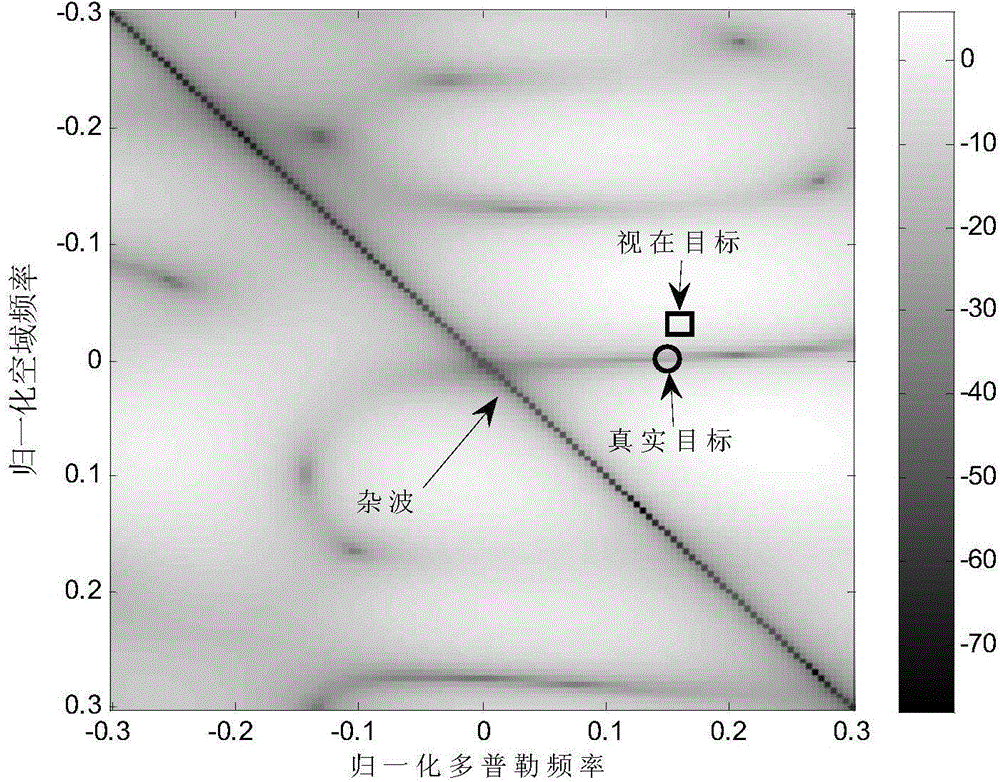Steady space-time adaptive processing-based target detection method
A space-time adaptive and target detection technology, applied to the echo signal processing of airborne radar, based on the field of robust space-time adaptive processing of target detection, can solve the problem of large amount of calculation, the impact of the load on the performance of the angular load, and the inability to give Issues such as analytical solutions
- Summary
- Abstract
- Description
- Claims
- Application Information
AI Technical Summary
Problems solved by technology
Method used
Image
Examples
Embodiment 1
[0085] refer to figure 1 , which shows a flow chart of a target detection method based on robust space-time adaptive processing according to an embodiment of the present invention. This embodiment may specifically include the following steps:
[0086] Step 1. Use the airborne radar to transmit signals and receive corresponding echo data.
[0087] Step 1 described in this embodiment may specifically include the following sub-steps:
[0088] 1a) The airborne radar adopts an N-element equidistant linear array, the array element interval is d, and the number of pulses in a coherent sampling interval is K to transmit signals; it should be noted that the N, d, and K are all natural numbers.
[0089] 1b) Receiving corresponding echo data X, wherein the echo data X includes target echo data, clutter echo data, interference echo data, and noise echo data.
[0090] It should be noted that the present invention uses the echo data as the sample to be tested, and the echo data in the pre...
Embodiment 2
[0165] Attached below figure 2 An object detection method based on robust space-time adaptive processing is described.
[0166] refer to figure 2 , which shows a flow chart of a target detection method based on robust space-time adaptive processing according to an embodiment of the present invention. This embodiment may specifically include the following steps:
[0167] Step 201, the radar transmits and receives an echo signal X.
[0168] It should be noted that step 201 corresponds to step 1 in the first embodiment, and reference may be made to the related description of step 1 in the first embodiment, and details are not described here in this embodiment.
[0169] Step 202, performing time-domain sliding window processing on the echo signal to obtain X 1D .
[0170] It should be noted that X 1D It is the echo data after the sliding window, and step 202 corresponds to step 2 in the first embodiment, and reference may be made to the related description of step 2 in the ...
PUM
 Login to View More
Login to View More Abstract
Description
Claims
Application Information
 Login to View More
Login to View More - R&D
- Intellectual Property
- Life Sciences
- Materials
- Tech Scout
- Unparalleled Data Quality
- Higher Quality Content
- 60% Fewer Hallucinations
Browse by: Latest US Patents, China's latest patents, Technical Efficacy Thesaurus, Application Domain, Technology Topic, Popular Technical Reports.
© 2025 PatSnap. All rights reserved.Legal|Privacy policy|Modern Slavery Act Transparency Statement|Sitemap|About US| Contact US: help@patsnap.com



